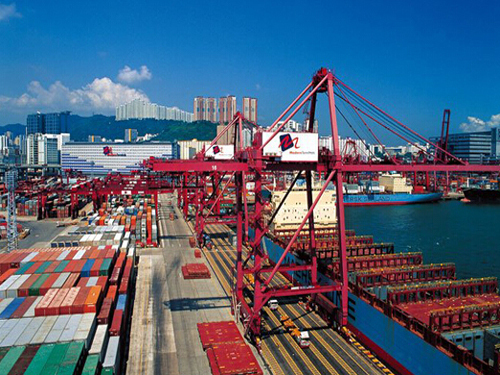If we say that the data for the entire first quarter of export growth of 4.9% and imports fell by 17.3% are still acceptable, then in March the number of imports and exports at the same time decreased by double digits, especially the export decline of 14.6%. It should be that the overwhelming majority Did not think of. In the first two months, the growth rate of China's exports was still 15.3%. By March of this year, a sudden 180 degree reversal occurred. What happened in the end? Embroidery Shirts,Long-Sleeve Clothing Shirts,Polyester Suede Men'S Shirt,Embroidery Men'S Shirts SHAOXING UNIVERSE IMPORT AND EXPORT CO.,LTD , https://www.zjshirts.com
The official explanation is that the Spring Festival is relatively late this year. Most of March is still in the first month of the lunar calendar, and export companies have not started a large area. If we remove this factor, exports in March fell 4.4%, narrowing more than 10 percentage points. Although this kind of interpretation can be understood, the transition from January to February's growth to March's decline may still have deeper reasons.
In the author's opinion, the weak external market demand bears the brunt. The National Bureau of Statistics announced that the new export order index in the manufacturing purchasing managers' index in March fell by 0.2 percentage points from February, and the new export order index in China's foreign trade export leader index announced by the General Administration of Customs fell by 2.1 compared with February. In percentage points, foreign demand has shrunk significantly. In March, in addition to the 1% increase in exports to India in major export markets in China, all other major export markets fell year-on-year. For example, exports to the United States, ASEAN, Brazil, and South Africa fell 7.7%, 8.9%, 8.4%, and 5.3% year-on-year. Even more severe, exports to the EU fell by 18.7%, exports to Japan fell by 24.4%, and exports to Russia fell by 50.2%. %.
On the other hand, the strong exchange rate has also made the situation worse. The bank's real effective exchange rate announced by the Bank for International Settlements hit a record high in September last year and was broken in February of this year for five consecutive months. It is expected that this record will continue to be broken in March of this year. In the context of weak external demand, the exchange rate continued to rise, becoming another obstacle to blocking exports. In March, the appreciation of the *** against the euro and the Japanese yen showed significant momentum, which exacerbated the deterioration of exports to the EU and Japan.
Also, the high overall cost will weaken the export advantage. Although the cost of raw materials has recently declined compared with the same period of last year, the costs of the labor force, environmental protection, and environmental protection are still high, and the competitive advantage of traditional foreign trade is being weakened. The survey conducted by the General Administration of Customs on nearly 3,000 export companies showed that 56.2% of companies reported that total export costs increased year-on-year in March. Among them, 61.8% of companies thought that labor costs increased year-on-year, and 37.5% of companies believed that ** cost On the rise, 33.4% of companies believe that the exchange rate costs have risen. Exports of traditional labor-intensive products that are most sensitive to costs have also declined. Textiles dropped by 28.8%, clothes dropped by 35%, bags and bags dropped by 19.3%, furniture fell by 15.2%, shoes dropped by 26.5%, plastic products decreased by 24.4%, and toys decreased by 21%. .
In fact, it is not difficult to answer the question of “what happened†to China’s exports in March. What is difficult is how to make it clear how China's exports will be "what to do" in the future? What should the government do? What should a company do?
The author believes that for the government, since last year, the country has introduced a series of policies and measures to support the stable growth of foreign trade, and the commercial, customs, quality inspection, finance, and taxation departments have also issued supporting measures. However, what the government is going to do now is to do a good job in the implementation of these policies and measures so that foreign trade companies can truly enjoy the policy dividend. Various foreign trade departments must further strengthen coordination, support each other, and cooperate with each other to form a concerted effort to enhance the confidence of foreign trade companies and create a good environment.
For foreign trade companies, we must see these "concentrates" of government departments. However, as the main body of foreign trade, enterprises can't just watch the government sing “one-man showâ€, but also actively and dedicate itself to technological transformation, product upgrading and business model innovation, transforming from low-end manufacturing to high-end manufacturing, driving development with innovation, and improving itself. The international competitiveness and resistance to risk. Only when China’s foreign trade companies are bigger and stronger, can China’s foreign trade be bigger and stronger; only China’s foreign trade companies can withstand the tremendous pressure brought about by the severe and complex international and domestic situations, and China’s foreign trade will be able to retain its global market share and achieve a “great improvementâ€. Out of the "advanced to superior" transformation.